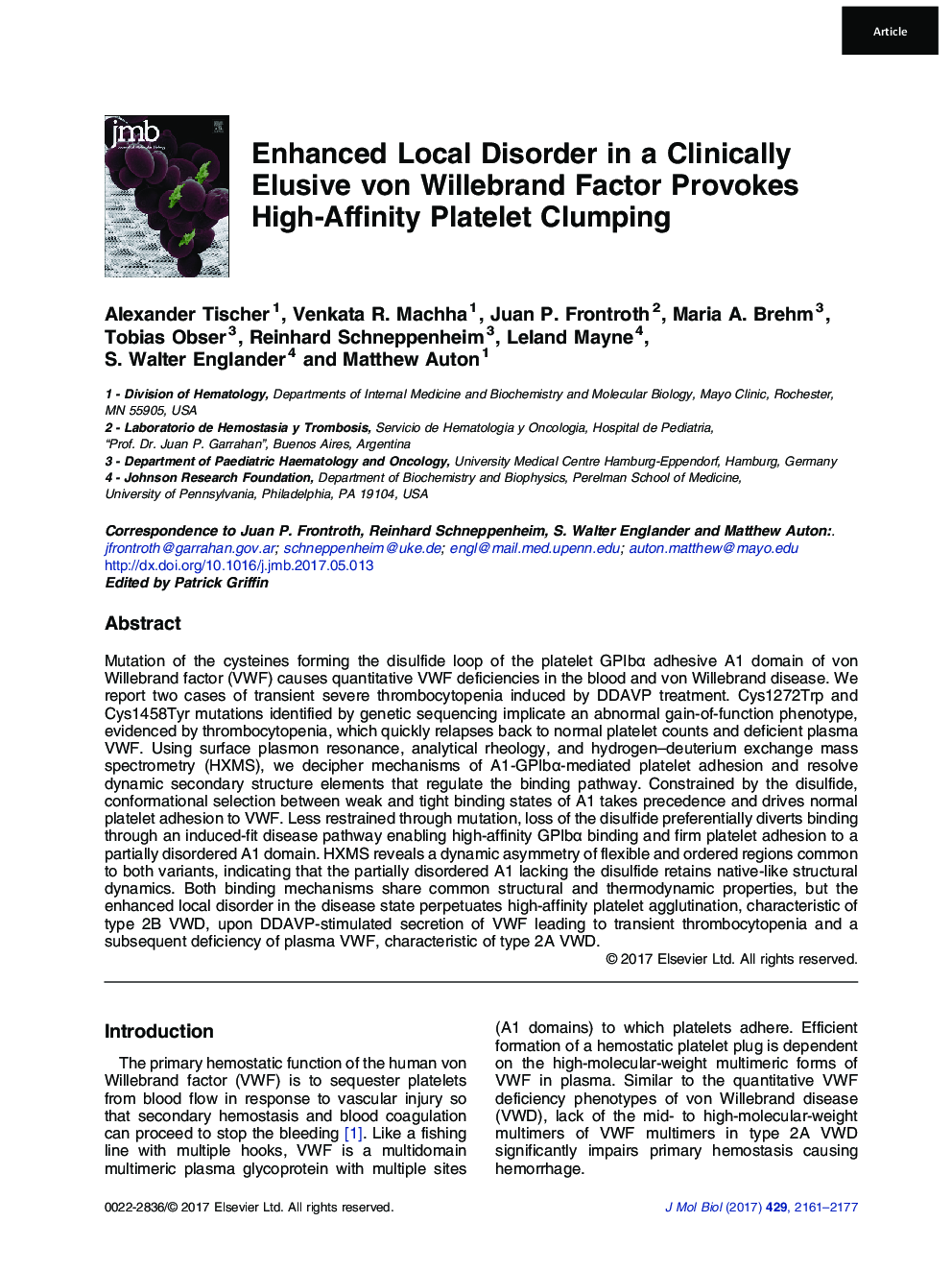| کد مقاله | کد نشریه | سال انتشار | مقاله انگلیسی | نسخه تمام متن |
|---|---|---|---|---|
| 5533188 | 1402106 | 2017 | 17 صفحه PDF | دانلود رایگان |
- Normal platelet adhesion to VWF is driven by conformational selection between weak and tight binding states of the platelet GPIbα binding A1 domain.
- Mutation of the VWF A1 domain disulfide bond induces a gain-of-function type 2B VWD phenotype revealed by platelet clumping and DDAVP-induced transient thrombocytopenia in two VWD patients.
- Loss of the disulfide enhances local disorder in A1, as observed by HXMS, which perpetuates abnormal high-affinity induced-fit binding of A1 to platelet GPIbα, causing quantitatively deficient plasma VWF.
Mutation of the cysteines forming the disulfide loop of the platelet GPIbα adhesive A1 domain of von Willebrand factor (VWF) causes quantitative VWF deficiencies in the blood and von Willebrand disease. We report two cases of transient severe thrombocytopenia induced by DDAVP treatment. Cys1272Trp and Cys1458Tyr mutations identified by genetic sequencing implicate an abnormal gain-of-function phenotype, evidenced by thrombocytopenia, which quickly relapses back to normal platelet counts and deficient plasma VWF. Using surface plasmon resonance, analytical rheology, and hydrogen-deuterium exchange mass spectrometry (HXMS), we decipher mechanisms of A1-GPIbα-mediated platelet adhesion and resolve dynamic secondary structure elements that regulate the binding pathway. Constrained by the disulfide, conformational selection between weak and tight binding states of A1 takes precedence and drives normal platelet adhesion to VWF. Less restrained through mutation, loss of the disulfide preferentially diverts binding through an induced-fit disease pathway enabling high-affinity GPIbα binding and firm platelet adhesion to a partially disordered A1 domain. HXMS reveals a dynamic asymmetry of flexible and ordered regions common to both variants, indicating that the partially disordered A1 lacking the disulfide retains native-like structural dynamics. Both binding mechanisms share common structural and thermodynamic properties, but the enhanced local disorder in the disease state perpetuates high-affinity platelet agglutination, characteristic of type 2B VWD, upon DDAVP-stimulated secretion of VWF leading to transient thrombocytopenia and a subsequent deficiency of plasma VWF, characteristic of type 2A VWD.
Graphical Abstract220
Journal: Journal of Molecular Biology - Volume 429, Issue 14, 7 July 2017, Pages 2161-2177
